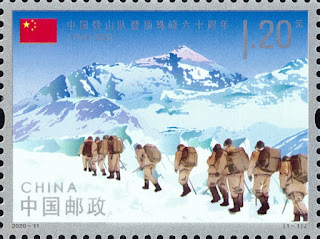In an earlier chapter on the vaccine race, I wrote: God forbid Pfizer wins the race. God answered my fears. Yesterday, Pfizer announced with aplomb a 90% effective vaccine. Editors changed headlines, stock markets vaulted, people made new Christmas plans, respectable newspapers foresaw the end of the pandemic.
The Pfizer vaccine needs to be stored at -80 C (-112
F) all the time. The ultracold logistics rule out most of Asia and Africa. In
the best case, it is accessible to 2.5 billion people in 25 countries, mainly North
America and Europe.
Dr Fauci called the results extraordinary, at the same
time admitting he hadn’t seen the data yet. May the vaccine truly have extraordinary
success, and spell the end of the pandemic.
*****
When such joyous news is announced, it is in bad taste
to criticize or express concerns. The critic will be termed a spoilsport, a pessimist,
a conspiracy theorist, or antivaxx activist. I am none of these. I am, however,
puzzled by the way Pfizer has gone about the process. I would like to voice
these concerns so as to tone down the hype, if it is hype.
As I wrote earlier, in the trials, the company must reach
pre-agreed numbers of Covid-19 cases, in the vaccine and the placebo groups.
Since the beginning, Pfizer has been aggressively demanding more interim
points, and fewer cases. Their minimum point for seeking authorization was 32.
(32 patients among 30000 participants). Anybody who has studied statistics would
know the number doesn’t look significant. In fact, scientists not working for Pfizer
raised this concern. This was summer time, and the curve was going down. The
Pfizer scientists were worried about the time it may take to reach a higher
figure. But they amended protocol to look at the data at 62 cases. Not only the
numbers, Pfizer’s plan allowed the mildest cases to be counted.
Most other
trials including Johnson & Johnson and Oxford, even the Chinese vaccine
trial currently, were paused because of adverse events. This is when a
participant develops a condition that may have been caused by the vaccine. The
trial remains paused until the condition is investigated. Pfizer enlarged its sample
size to 44,000 but didn’t face a single adverse event, which must be attributed
to its luck.
On 26 October, Albert Bourla, Pfizer’s CEO said they didn’t
have 32 covid cases yet. The interim data, when available, is reviewed by an
independent board. Pfizer was once again lucky, the cases surged dramatically.
On Sunday, 8 November, the independent board came, reviewed the data of 94
cases, and let the company management know the conclusion without sharing data.
*****
The trial is not over. It will be over once Pfizer
reaches 164 cases. The right thing was to wait till the end of the trials, and
then publish the data in a medical journal for peers to review. Once it is peer-reviewed,
the results can be published worldwide. Instead of that, Pfizer opted to release
unpublished, unreviewed half-baked data as news.
Not only that, the news was released consciously early
on Monday morning before the US stock markets open. Stock markets are like dogs
who will drool and jump at the sight of a dummy bone. When the markets opened,
Pfizer shares leaped by 15%, its partner BioNTech’s by 24%, and the major
indexes reached new records. Such outright corruption was glossed over in the
euphoria of the 90% effective vaccine.
FDA now has stricter standards after botching hydroxychloroquine
and plasma episodes. Scott Gottlieb, the previous FDA commissioner, is now on
Pfizer’s board. That may help in the approval process.
*****
Though times are exceptional, and any vaccine may be
better than no vaccine, knowledge of Pfizer’s maneuvers dilutes the joy of
their 90% effective news.
Ravi








